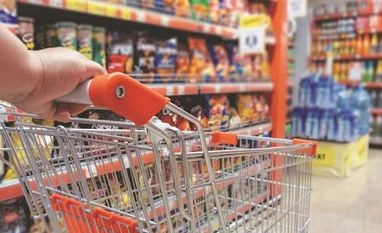Weak rural demand has become a concern not just for the fast-moving consumer goods (FMCG) industry, but it has impacted sales of other consumer segments like consumer durables and apparels as well.
Sanjiv Mehta, chairman and managing director of Hindustan Unilever told Business Standard in a recent interview, “Value growth in rural areas is still positive. Negative growth is volume growth. That’s very clearly a distinction because the headline growth is still positive. And, there are a couple of things which I would say. One is the unprecedented inflation, which has taken place in some of the big categories over the last two years.”
He added, “Most notably in businesses like skincare, there you have palm oil as a feedstock.”
Marico also told investors, post its earnings conference call, that rural markets have witnessed a slowdown compared to urban markets.
“Rural consumption has been slower of late. We are optimistic of a recovery with more stimulus in the upcoming Budget, a good monsoon season and a healthy sowing season,” Saugata Gupta, managing director (MD) and chief executive officer (CEO) of Marico told investors.
Consumer durables makers have also witnessed a slowdown in rural demand due to inflationary trends coupled with weak festive season sales. This was followed by Omicron, which has dampened the wedding season demand as well.
“Rural markets continue to be muted. The segment is a substantial contributor to refrigerators and washing machines. The lukewarm performance quarter-on-quarter since the second quarter is affecting the sector,” Kamal Nandi, business head and executive vice-president of Godrej Appliances told Business Standard. He also said the inflationary trend in the economy is dampening demand further.
Demand for television (TV) panels was also impacted in rural regions due to last-mile delivery issues. Also, many stock keeping units (SKUs) were going out of stock during the sale months.
“There has been a major demand impact in rural regions of India for TVs. One of the key reasons has been Covid that has hit in the past 24 months,” said Avneet Singh Marwah, CEO of Super Plastronics, the TV manufacturer for Kodak, Thomson, Blaupunkt and Westinghouse in India.
Marwah said key contributors for this impact have been volatile supply due to lockdown, curfew that affected last-mile deliveries and the SKUs that were out of stock during the sale months.
Month-on-month price increase due to rising raw material costs has caused TV prices to go up by more than 30 per cent. This impacted demand in rural markets as it is price sensitive. Rural consumers also spent disposable income on health care, especially in the second wave. This had an adverse impact on demand for electronics.
Predictivu — a data science platform — noted that in offline retail, large cities had recovered and also overtook both in volume and value terms the pre-lockdown numbers. However, smaller cities lagged in the October-December quarter.
“The post-lockdown recovery of offline retail sales of mobile phones has been faster and bigger in metros and large cities. While in Q4 of 2021 (calendar year), large cities had recovered and also overtook — both in value and volume — the pre-lockdown numbers, smaller cities were lagging far behind,” said Kunal Sarkar, vice-president, PredictiVu.
He also said that sales of mobile phones in the quarter ended December fell below the January-March 2021 quarter. He added that offline retail sales of mobile phones in the below Rs 15,000 price range rose more than those in the over Rs 25,000 price range.
Sarkar said, “If we look at sales of smartphones in the offline retail segment, it tells us what is happening in cities across India. Battered by the recurrent pandemic waves, accompanying restrictions, consumer preference to buy online, and shortage of devices, offline retailers are unable to cope up.” He also said offline retailers are either faced with closure or are struggling to maintain sales.
In apparels, customers in smaller towns have seen pressures on their income impacting sales as their spending patterns have changed.
“Post the two Covid lockdowns, customers have gone into saving mode with the added pressure of reduced social events. This has reduced the reason for people to buy clothes,” said Lalit Agarwal, MD of Vmart.
Unlock 30+ premium stories daily hand-picked by our editors, across devices on browser and app.
Pick your 5 favourite companies, get a daily email with all news updates on them.
Full access to our intuitive epaper - clip, save, share articles from any device; newspaper archives from 2006.
Preferential invites to Business Standard events.
Curated newsletters on markets, personal finance, policy & politics, start-ups, technology, and more.
)